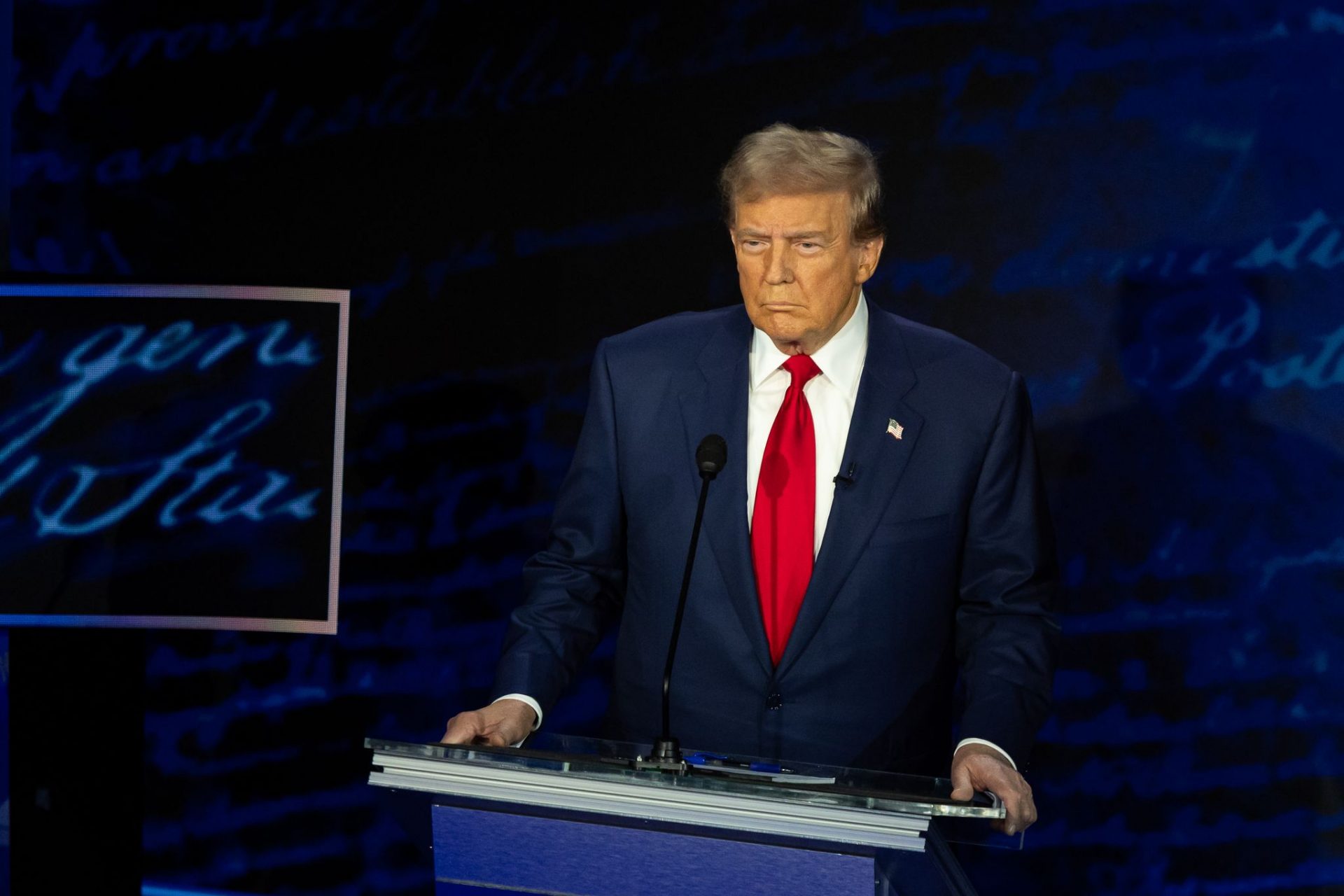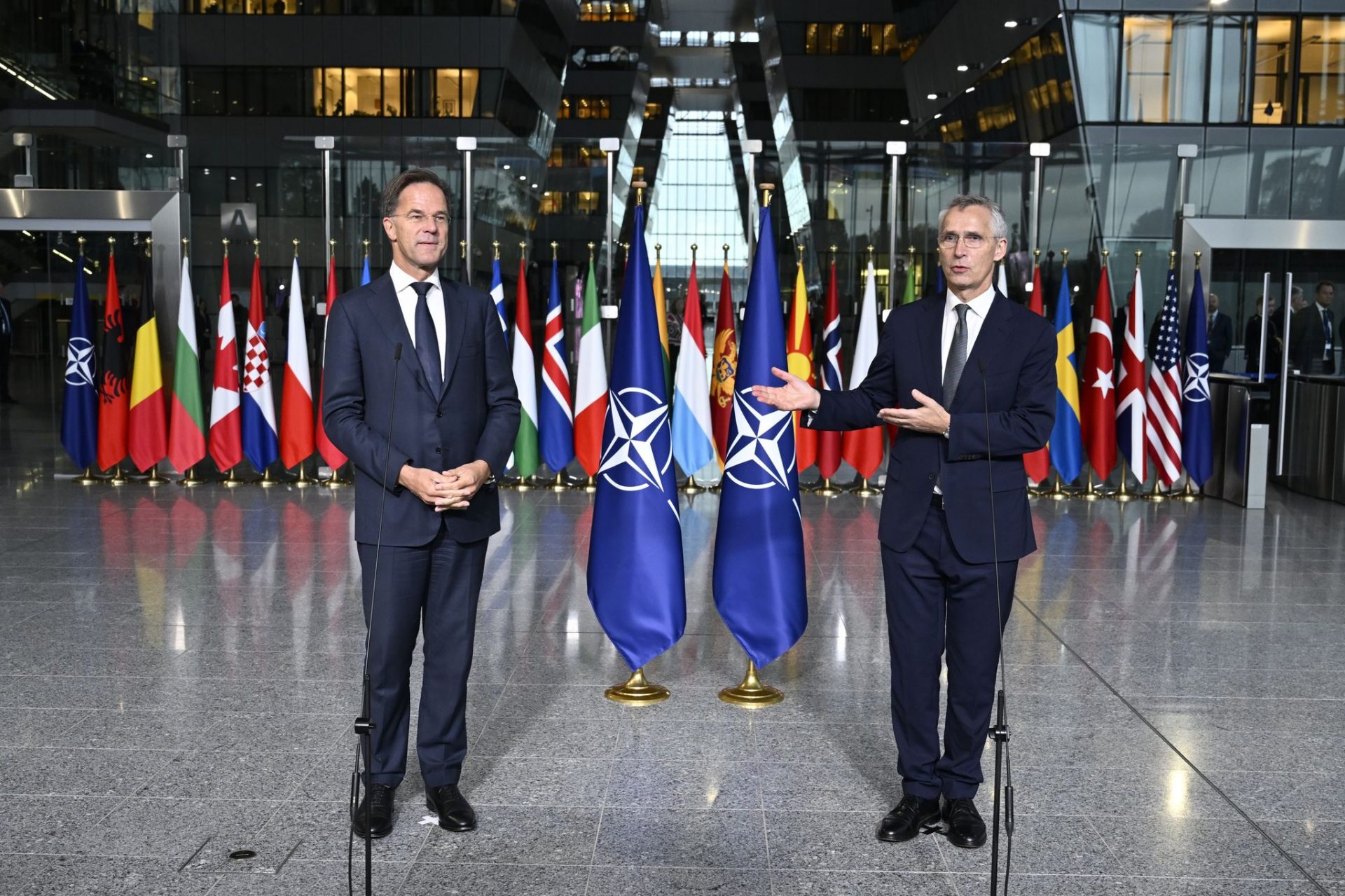 Have the article read by OpenAI (Beta). Please note that AI translations may take some time to process.
Have the article read by OpenAI (Beta). Please note that AI translations may take some time to process.On Tuesday (October 1), former Dutch Prime Minister Mark Rutte assumed leadership of the North Atlantic Treaty Organization (NATO) – the world’s most powerful military alliance – as its new Secretary General.
In opting for the veteran Dutch statesman, a staunch ally of the United States and stalwart backer of Ukraine, NATO’s 32 nations have picked a leader expected to keep pushing support for Kyiv and efforts to bolster the alliance’s own defences in the face of Russia.
In an unannounced visit to Kyiv on Thursday (October 3), Rutte reiterated the alliance’s continued support to Ukraine and vowed “to make crystal clear” to all observers that NATO stands with the country.
As NATO’s leader, Rutte must above all ensure that unity is maintained within the military alliance. In doing so, he will be able to put his skills as a strategic bridge-builder to good use.
The reality of the NATO job means Rutte will be heading a risk-averse civilian bureaucracy, with hard power ultimately residing with member countries and above all the United States.
Former NATO chief Jens Stoltenberg has called Mark Rutte “a great successor”. During his more than ten years at the helm, the Norwegian was often praised for his calm stewardship of the sometimes fractious alliance.
Push for Ukraine’s NATO membership
Since Russia’s tanks rolled into Ukraine on February 24, 2022, the push for more defence has become a major preoccupation in Europe. Discussions on Ukraine’s membership to the military alliance have since gained momentum.
On Tuesday, Rutte said “Ukraine belongs in NATO” and stressed that “an independent and democratic Ukraine is vital for peace and stability in Europe”. In Kyiv on Thursday, he added that “Ukraine is closer to NATO than ever before and will continue on this path”.
“I know from personal experience with the downing of flight MH17 how the conflict in Ukraine is not contained to the front lines.”
Mark Rutte, Secretary General of NATO
His 14-year tenure as prime minister of the Netherlands was marked by the shooting down of Malaysia Airlines flight MH17 over Ukraine in 2014, with 196 Dutch among the 298 killed.
According to Rutte, NATO allies cannot escape investing more in NATO. “To truly match our capabilities with our needs, we need significantly more defence spending.” He also said the cost of supporting Ukraine is “far, far lower than the cost we would face if we allow [Russian President] Putin to get his way”.
During former NATO chief Stoltenberg’s ten-year tenure, NATO welcomed four new allies: Montenegro, North Macedonia, Finland and Sweden. Both Nordic countries abandoned years of neutrality after the all-out Russian invasion of Ukraine.
Balancing act with the EU
One of Rutte’s priorities is to “deepen our partnerships with like-minded nations near and far that share our values”. He cited cooperation with countries in East Asia and Oceania and with the European Union as examples.
According to Rutte, there is potential to boost NATO-EU cooperation in many areas from supporting Ukraine to countering hybrid threats. “The European Union is NATO’s unique and essential partner,” he said at his first press conference as Secretary General on Tuesday.
Due to military threats, cyber attacks and economic challenges, the EU has for the first time appointed a European Commissioner for Defence. Former Lithuanian Prime Minister Andrius Kubilius has been designated for the post.
“I welcome…the EU’s efforts to defence. I think there is a clear recognition, both on the side of NATO and of the European Union that we both value a more capable European defence, of course being complementary to and interoperable with NATO,” Rutte said.
Rutte participated at meetings of the EU heads of state and government in the European Council for the last 14 years in his role as Dutch prime minister. He believes the EU and NATO have the potential to get on the same page, but said that he does not want to create a parallel structure or duplication of what NATO is already doing.
In June, Bulgarian President Rumen Radev underlined that ensuring a high level of security can only be achieved by NATO and EU countries joining forces. “The outbreak of new military conflicts in various parts of the world and Russia’s full-scale war of attrition against Ukraine are presenting the defence industry and science with new and unfamiliar challenges,” he said.
One hurdle for NATO-EU relations is the fact that NATO ally Türkiye does not recognise the Republic of Cyprus, an EU member state.
In 1974, Türkiye invaded the northern part of Cyprus following a Greek-backed military coup. The island has been divided since then. Türkiye is the only country that recognises the Turkish Republic of Northern Cyprus as a de facto state – all other states consider the territory to be part of the Republic of Cyprus.
Türkiye does not accept the presence of Cyprus in any contacts between NATO and the EU, based on the so-called “Berlin Plus agreement” of 1999 that foresees the existence of security protection rules in the exchange of and access to classified NATO information.

No fear of Trump’s return to the White House
In addition to bolstering support for Ukraine, the potential return of former US President Donald Trump to the White House in November would be a major test for Rutte. Past statements from Trump have cast doubt on US collective defence commitments to the alliance.
On Tuesday, Rutte downplayed fears over the impact of a potential Trump victory in the November 5 US presidential elections and pledged to keep backing Ukraine.
Referring to the two presidential candidates Kamala Harris (Democrats) and Donald Trump (Republicans), Rutte said he respected both candidates very much and was convinced they understand what is necessary for NATO. He also recalled that Trump was the one who pushed to accelerate the alliance’s defence spending.
Trump reportedly mulled withdrawing the US from NATO during his first term and threatened not to protect allies that do not spend enough on defence. Earning him the nickname “The Trump Whisperer”, Rutte is widely credited with rescuing a 2018 NATO summit by talking Trump around on defence spending.
In 2014, the NATO allies agreed to commit two percent of their national Gross Domestic Product (GDP) to defence spending. However, a decade after NATO set this target for its allies, only 23 of them hit that bar this year. The target is seen as a way to keep Trump at ease with NATO.
According to NATO estimates for 2024, countries like Poland (4.12 percent), Estonia (3.43 percent) and the United States (3.38 percent) are spending the most in relation to their GDP. Others such as Spain (1.28 percent), Slovenia and Luxembourg (both 1.29 percent) fall below the two-percent target.
With the threat from Russia expected to last for years – whatever the outcome in Ukraine – there is a clear understanding that more will be needed. That could prove a tough sell for Rutte, who only saw the Netherlands reach the two-percent goal in his 14th, and final year, in office. Countries like Portugal have occasionally stated that this target can only be achieved in 2030, or 2029 at best.
At a farewell speech at the German Marshall Fund in Brussels in mid-September, former NATO chief Stoltenberg said that Europe cannot do without the United States, but neither can the US do without Europe. “Europeans must understand [that] without NATO, there is no security in Europe. 80 percent of NATO’s defence spending comes from non-EU allies.”
European Commission President Ursula von der Leyen has estimated that the bloc will need to invest 500 billion Euro overall on defence over the next decade, but the figures on the table at an EU level are far below that.
This article is published twice a week. The content is based on news by agencies participating in the enr.
